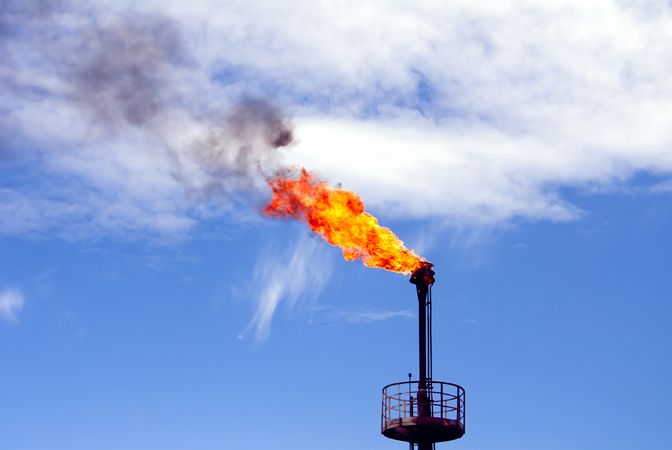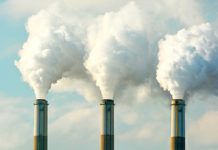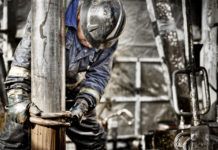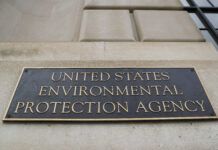Taking what they say is a sizeable step toward corralling methane emissions by U.S. oil and gas producers, the Environmental Protection Agency issued a controversial directive in May requiring that all methane from new or modified sources be contained and transported offsite rather than flare burned. Producers must also regularly monitor and repair methane leaks, also known as “fugitive emissions.”
Oil and gas producers fear the regulations will soon be expanded to include existing facilities, perhaps as early as 2017. The new rule falls under President Obama’s Climate Action Plan: Strategy to Reduce Methane Emissions, which aims to cut methane emissions from the oil and natural gas industry by up to 45% by 2025. Methane is a primary component of natural gas.
SIGNIFICANT INVESTMENT
Don Briggs, president of the Louisiana Oil and Gas Association, says the new rule is a case of incredibly bad timing given the current economics of the oil and gas industry. “Still, I’m more concerned about it being pushed back than I am it being pushed forward,” he adds. “It’s a lot easier for us going forward because we can plan for it. If it gets pushed back to include all facilities, then we’ll have to refabricate and re-do, which will be a significant investment.”
Erik Milito, who handles regulatory and legislative policy for the American Petroleum Institute in Washington, D.C., says the process of developing a subsequent rule to cover existing facilities has already begun. “They [EPA] recently issued an Information Collection Request,” Milito says. “That is the first step in the process toward regulating existing sources. Based upon the data they collect from the ICR, EPA will devise a plan for eventual implementation.”
API was generally in agreement with an earlier EPA rule in 2012, which focused primarily on the regulation of VOCs (volatile organic compounds). “When you do that, as a co-benefit you get methane, because those gases are intermingled,” Milito adds. “That’s the approach we thought they should have taken here.”
Briggs feels the stringent regulations are unnecessary, given the progress the industry has already made. “While we’ve significantly increased our natural gas production since 2005, at the same time we’ve voluntarily decreased emissions,” he adds. “We’re already more efficient today, as technology has developed to help eliminate CO2 emissions.”
STOPPING THE LEAKS
Richard Metcalf, director of environmental affairs with Louisiana Mid-Continent Oil and Gas Association, expects possible impacts to drilling in the Haynesville Shale formation in northwest Louisiana, where a significant pipeline infrastructure already exists to transport the methane offsite. “In areas where there is no existing infrastructure, you will still be allowed to flare [burn] the methane.”
The leak detection component of the rule is particularly troublesome for Louisiana producers, Metcalf says. “You have to go around and check to see if there are any leaks from flange connectors, valves, compressor seals, etc. Those types of things you have to monitor twice a year. That’s problematic for Louisiana, where a lot of our facilities are remote. A two-hour boat ride to a facility in a marsh and a two-hour boat ride back can be very expensive and time consuming.
He says the EPA did not account for such costs when formulating the new rule. Compliance will be labor intensive, since producers will have to physically tag, monitor and maintain every valve. Additionally, more expensive “low flow valves” will need to be installed to minimize leaks, effectively prohibiting companies from re-using older valves from decommissioned facilities.
“One of the more critical components of this ruling requires that producers change their reciprocating compressors,” Metcalf adds. “Operating like a piston in your car, these compressors deliver gases at high pressures. Now, according to the rule, you have to change the packing once every three years.” Prior to the ruling, the packing was typically changed every five years.
A study conducted by Environmental Resources Management Inc., under contract with API, estimates that the limits placed on flaring from oil wells will cost the industry $304 million nationwide by 2025.
According to the EPA, methane has a global warming potential more than 25 times greater than that of carbon dioxide and is the second most prevalent greenhouse gas emitted by human activities in the U.S. They estimate that about one-third of those emissions come from oil production and the production, processing, transmission and storage of natural gas.
Originally published in the third quarter 2016 edition of 10/12 Industry Report.









